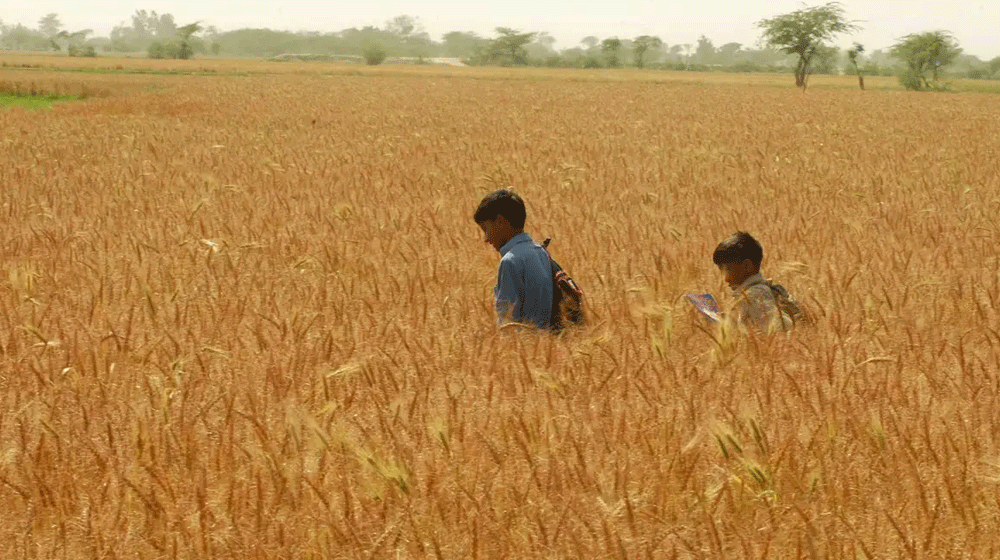A high-powered Federal Committee on Agriculture noted on Thursday that Pakistan’s wheat production declined by 2.5 percent with the yield of gram crop plunging as much as 51.6 percent over the last year.
It was revealed that the wheat crop yield for 2021-22 was estimated to be 26.8 million tons from an area of 8.99 million hectares, while the gram production for 2021-22 has been estimated at 354.7 thousand tons from an area of 866.6 thousand hectares.
The committee mandated to oversee strategic measures for ensuring food security in the country held its meeting with Federal Minister for National Food Security & Research, Syed Fakhar Imam in the chair.
As the committee also discussed the production achievements of other essential crops like lentils, onion, and tomato, it was informed that the potato production for 2021-22 had been estimated at 7.74 million tons from an area of 0.3 million hectares. The increase in production was 34.8 percent over the last year.
The committee held detailed deliberations over the production targets for essential Kharif crops 2022-23 and decided to fix 11.0 million bales of cotton production target from an area of 2.5 million hectares, whereas fixing 8.6 million tons production target for rice over 3.1 million hectares of land. The targets for other crops such as maize, Moong and Mash [pulses], and chilies were also fixed. The committee fixed the production target (2022-23) of sugarcane at 78.6 million tons over an area of 1.2 million hectares.
It also pondered the availability of agricultural inputs for Kharif crops (2022). For the Kharif year 2022, the water availability in canals head will remain at 65.84 million acres feet (MAF) as against last year which was 65.08 MAF. At present, all the provinces are getting their satisfactory supplies in the system.
According to the Meteorological Department, overall normal rainfall is likely to occur all over the country from July to September. Sindh and Kashmir are likely to receive slightly above normal (+10 percent) rainfall during August and September. The committee was also informed that sufficient water would be available for irrigation and power sectors.
The committee was informed that the availability of rice and maize seeds would remain available as per requirement. The SBP representative said that allocations of institutional credit for agriculture had substantially increased to Rs. 1700 billion for 2021-22 and the disbursement up to January 2022 was Rs. 740.3 billion which was 43.5 percent of the overall annual target of Rs. 1700 billion — 3.4 percent higher than the disbursement of Rs. 715.6 billion last year.
The committee appreciated the positive impact of the fertilizer subsidy scheme which contributed to high yield. It noted that the supply of urea remained under stress due to high demand for Urea and high prices of DAP during 2020-21 for 2021-22 Rabi season. Due to local production and available stocks, the supply position of Urea will remain comfortable subject to the operation of LNG-based Urea plants, while DAP will also remain at a satisfactory level.
The committee expressed satisfaction over the food security situation in the country, however, it emphasized the need for research & development as well as better coordination to consolidate the gains and ensure further progress in the sector.
Senior officers of the Ministry of National Food Security & Research, the meeting was attended by the representatives of provincial agriculture departments, State Bank of Pakistan (SBP), Zarai Taqqiyati Bank Limited, National Fertilizer Development Center (NFDC), Pakistan Meteorological Department, Indus River System Authority, and Planning Commission of Pakistan.


























